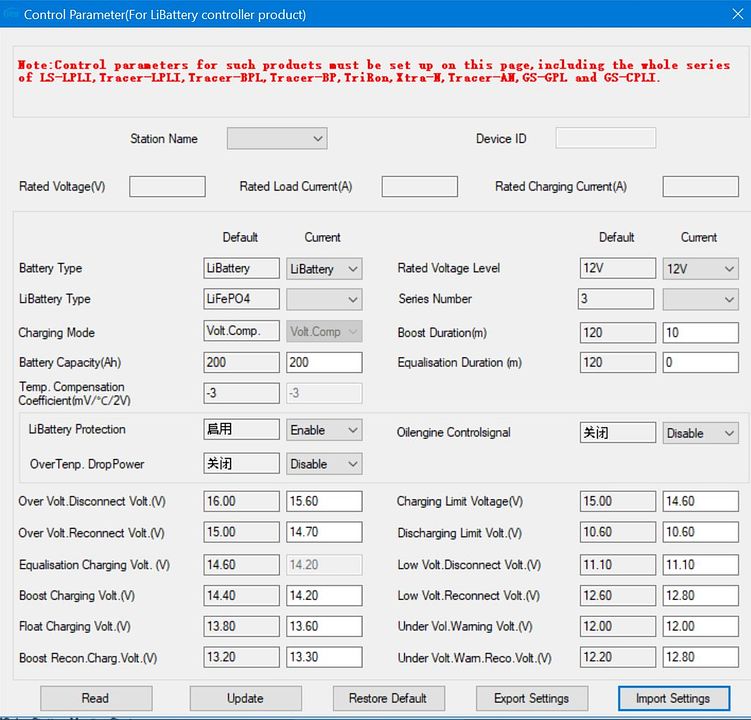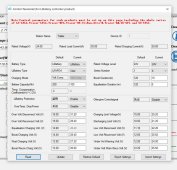Well there are lots of posts here but can't really tell what the actual question is.
I'm well familiar with the 3210AN, I have a XTRA3210n. If you're going to use it with a 24V battery pack - 8 cells 4S2P, then you do need to connect it to 24V with the cable and LiBattery Parameter control to set the charge parameters. If you select 24V, and Lifepo4, all you really need to change from the default settings is the equalization which should be zero, and the boost and float voltage that suits your battery bank.
The default is 14.5V for 12, so would be 29V for 24, which is a little high, I would set boost at 28.2 or 28.4 with a duration of 10 minutes - that is the shortest duration it will let you set it. Once the batteries reach 3.5Vpc they are at 100% SOC, so you don't really get anything more after that, but cells will go into overvolt and your bms will shut everything down.
Float should be 26.8V to 27.2V, the higher value if you have loads to service. If it's just idle then 26.8 is good.
If you're connected with a PC it will show if the controller is in boost or float, and will track input volts and amps from PV, as well as battery volts and amps indicated. NOTE: the Ah capacity does not show on the Tracer display, but whatever you set it it at for total battery capacity and voltage, it will show as a percentage of SOC. Which isn't very accurate, a shunt meter is much more valuable for this.
Anyway, not sure about the spikes, but your max charge voltage should be just a volt or so more than the boost voltage you set, with a reconnect a volt lower than that. The program won't let you put values out of whack, they have to be stair-step up from boost reconnect, to float, to boost, it will auto-set equalization but duration is zero so just the value is there.
Oh, you do need to select the parameter for control as the LiBattery - that turns on the settings for lifepo4 charging.
Let me know what's next. If your battery is fully charged then the controller is not going to put any more current thru - it will show PV as zero or very low, same for battery - it will shut down charging if it's reached the controller voltage settings. And it does measure battery voltage with the charge current on top, but the battery never actually reaches those charging parameters, the controller switches to float and will just maintain the battery voltage level and step up current when loads are turned on.

 diysolarforum.com
diysolarforum.com






